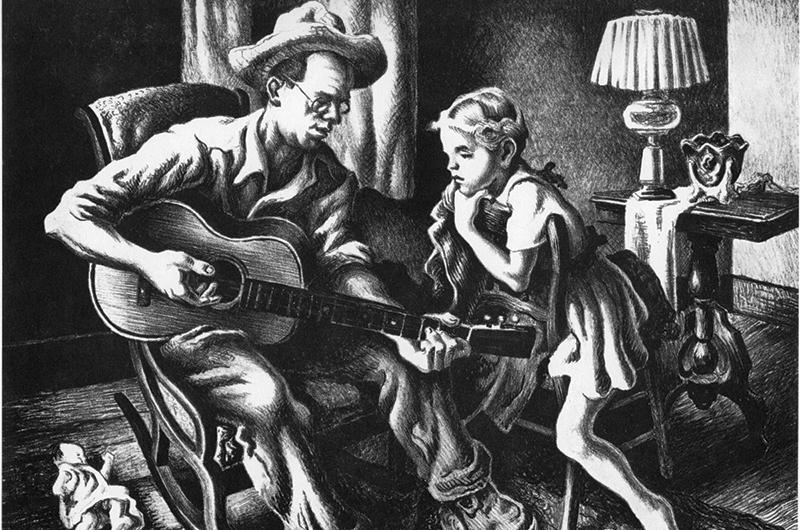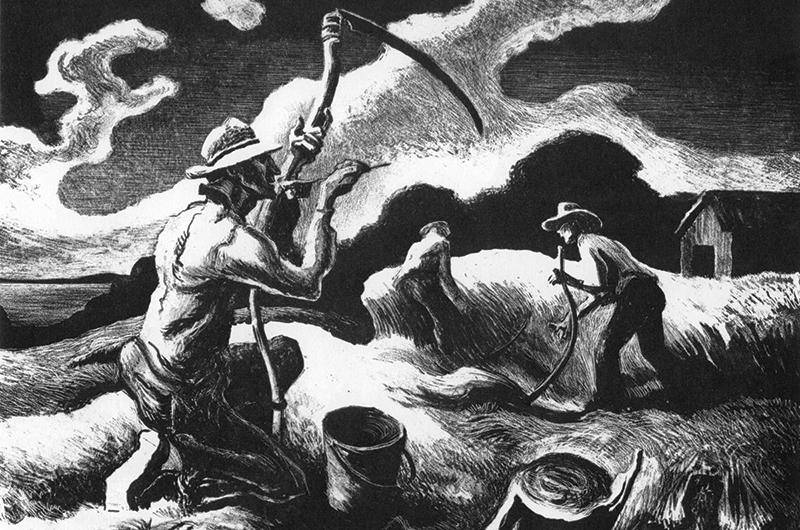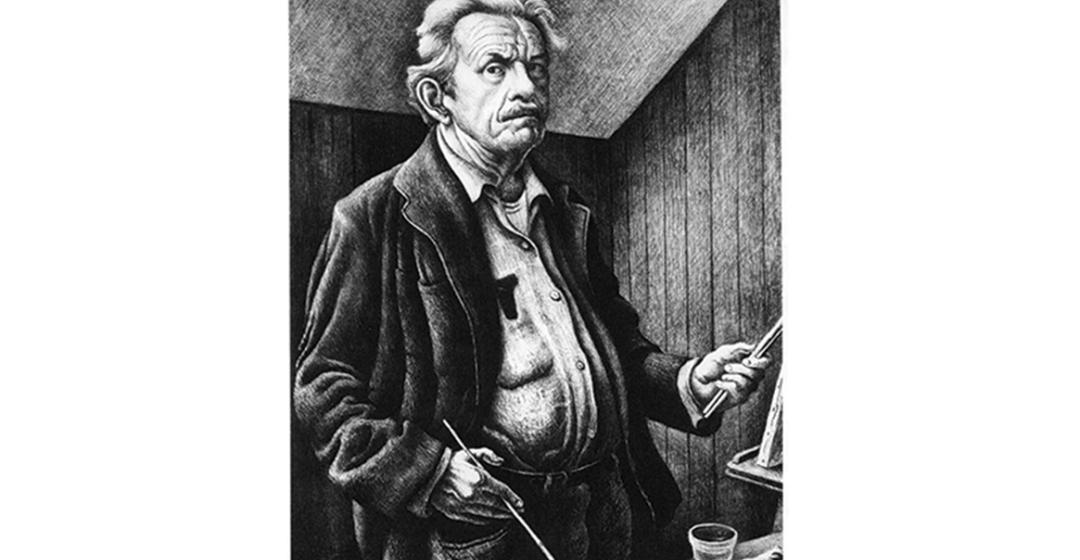The American painter and muralist Thomas Hart Benton (1889-1975) first visited Martha’s Vineyard around 1920, and made it his summer home for over a half century. Benton collected a community of friends, bought property in Chilmark, and immersed himself in the simplicity of life on the Island – a place whose farming culture must have contained some grains of similarity to his midwestern roots, yet whose distance from both that world and his urban homes in New York and Kansas City allowed it to become his seasonal escape.
In the years before he came to Martha’s Vineyard, Benton’s artistic style vacillated as he first absorbed, then rejected, North American and European aesthetic trends. His style settled in the 1920s into what would come to be called Regionalist – the genre of representational art, inspired by the American environment and its people, that would bring him renown.

Benton himself noted the coincidence of his maturing style and his summer habitations on the little island off the coast of Massachusetts. It seems the Island’s shelter from urban life and the art world gave Benton the mental space to find his ideal subject matter and mode of expression. His focus centered on art that wasn’t elevated above the people, but for them and about them; art that functioned like the folk songs Islander Gale Huntington would play in his Chilmark home for friends and family (as depicted in the Benton lithograph on the facing page).
Notably, the lithographs reproduced here found their way to their permanent home – at the New Britain Museum of American Art in Connecticut – via a Vineyard connection. Sanford Low, who was the director of the small museum, first met Benton in his Chilmark studio at the invitation of their mutual friend, artist Denys Wortman. Low had been wary of meeting Benton, having heard that the artist despised museums for hiding art from the common man, but the two men hit it off and forged a lifelong friendship.

Benton often visited Low’s New Britain home and became a known figure in social circles there. His friendship with that community and his fondness for the museum opened the door for it to become a stronghold of Benton’s art. In 1953, at a time when Benton’s realistic style was out of vogue, the New Britain Museum of American Art acquired his mural The Arts of Life in America from the Whitney Museum of American Art in New York City, for the bargain price of five hundred dollars. (A comparable Benton mural, America Today, sold for $3.1 million back in 1982.)
The museum’s lithographs – a complete collection, as far as is known – were donated from a variety of sources, including Benton and his wife, Rita, his descendants, and the New Britain Garden Club. The museum later used endowments to acquire more of his work, thus compiling a leading Benton collection. The lithographs shown in these pages celebrate the Island, a place that inspired him and a community in which he found lifelong friendships and camaraderie.





